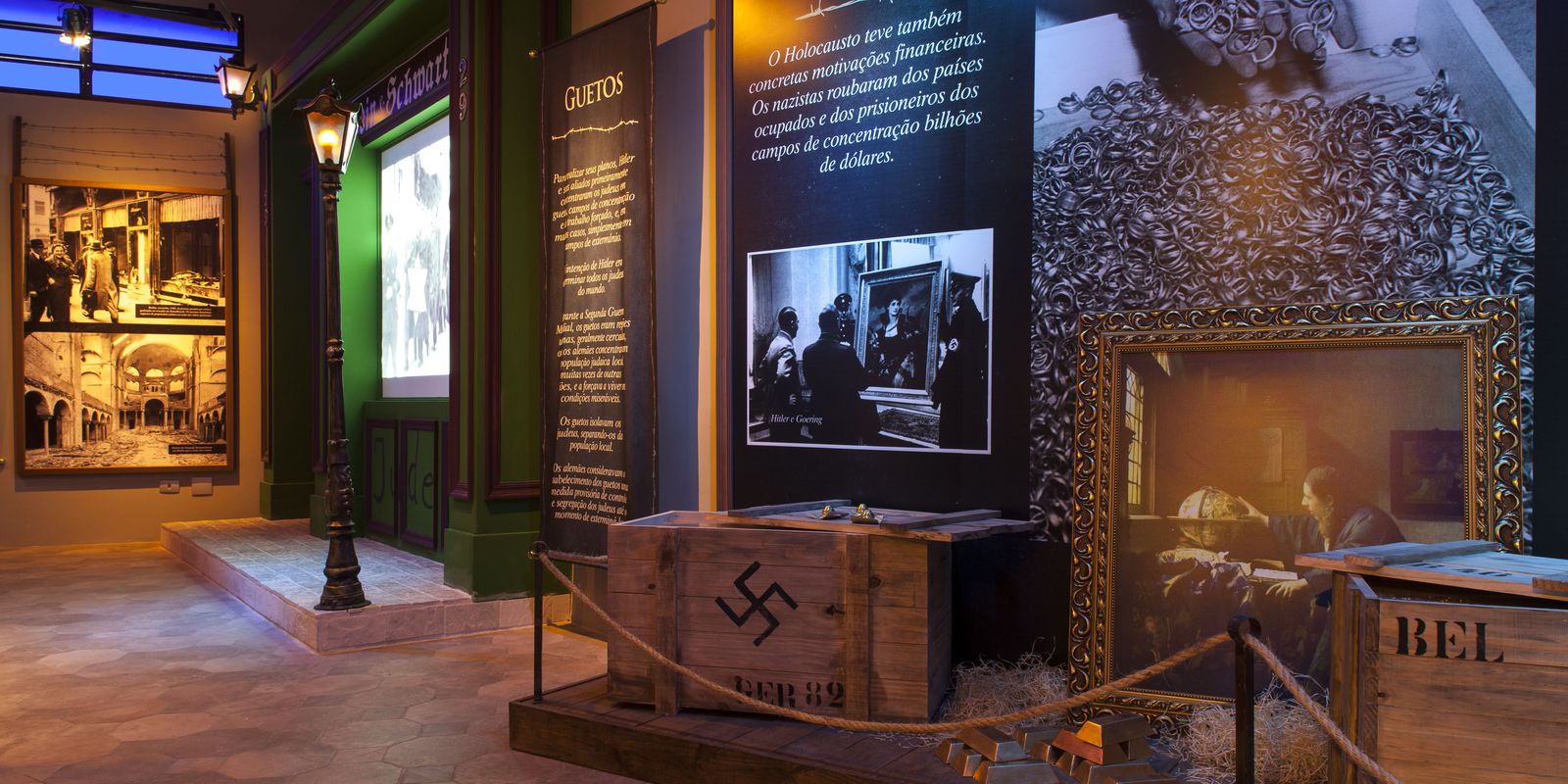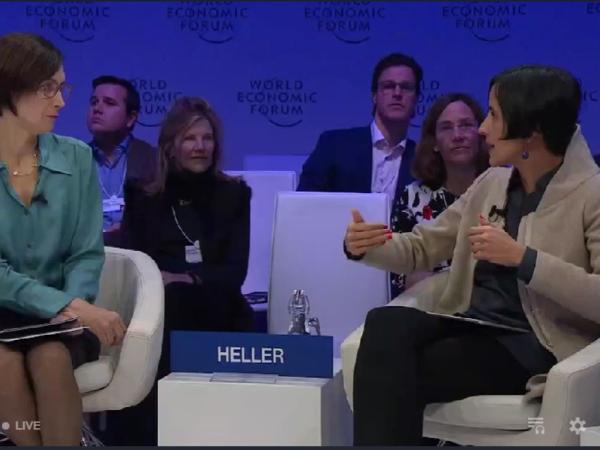The Holocaust Memorial, a new museum space in the city of Rio de Janeiro, is opening its doors to the public today (19). In the permanent exhibition, visitors can expand their knowledge about the events that marked history and have access to survivors’ life stories.
The construction of the Holocaust Memorial in Rio began to be conceived more than 30 years ago by former councilor and former state deputy Gerson Bergher, now deceased. A competition organized in the late 1990s by the Rio de Janeiro department of the Institute of Architects of Brazil (IAB-RJ) won the project by architect and urban planner Andre Orioli. But the proposal only got off the ground more recently.
Under construction since the beginning of 2019, the memorial was erected at Mirante do Pasmado, in Botafogo. The location was defined by the Rio City Hall, which supported the project and ceded the use of the land in 2018. The work is the responsibility of the Holocaust Memorial Cultural Association and was sponsored by private companies. The German Consulate is also a partner in the initiative. In 2020, there was the inauguration of the external area that houses a monument almost 20 meters high, divided into ten parts, representing the Ten Commandments. On its base was written the phrase: “Thou shalt not kill”.
With the opening of the installations in the exhibition area, visits can now take place weekly from Thursday to Sunday, starting at 10 am. Last entry should be at 5pm. Access is free, but there is a flow control and it is necessary to collect tickets beforehand through the sympla platform.
It is also possible to schedule guided group tours through the memorial’s educational program. There will also be encouragement for student excursions from public and private schools. “Our goal here at the memorial is to educate and transmit values. And to do this by keeping the memory alive, showing new generations that this existed. Because tomorrow, in the near future, people may start to think it was a fiction film. Keep it up. Preserving the memory is the only way to not repeat a Nazi holocaust over the years”, says Alberto Klein, president of the Holocaust Memorial Cultural Association.
He said that spaces like this help society to prepare to curb certain types of manifestation. “Hate speech is not freedom of expression. Defending the extermination of a group is not freedom of expression. It is racism and here in Brazilian law it is a crime”.
The holocaust was the mass murder of millions of Jews and members of other minority population groups during World War II. It is considered the greatest genocide of the 20th century. Conducted through a systematic program of extermination put into practice by the Nazi State led by Adolf Hitler, it took place in Germany and in the other countries occupied by the Germans during the war. Monuments around the world seek to preserve its memory so that it is neither forgotten nor repeated.
According to Alfredo Tolmasquim, who coordinated the curatorial group made up of four people, there are several ways to provoke reflections on the holocaust. He recalls that there are memorials in different countries highlighting, for example, armed resistance or the massacre in concentration camps. In Rio, the central focus is on the life stories of survivors. “Instead of talking about a story of millions, we want to tell millions of stories,” he says.
Route
When visiting the interior of the building, the public is initially faced with a screen that shows faces and quotes from survivors about the value of life. From there, there is a route divided into three modules. Each of them depicts a chronological period. In the first, before the holocaust, there is information about what life was like for families before the establishment of the Nazi state. There are also images from the time, colored with the aid of artificial intelligence, which reveal moments of everyday life in schools, workplaces, neighborhoods, as well as parties, weddings, meetings, etc.
The lighting gradually darkens until the arrival of the second module, which portrays the period of the holocaust. From there, the photos become colorless. Information is presented on discrimination actions up to deportation and extermination, revealing people’s struggle for survival. Finally, in the third module, rebuilding life after the holocaust becomes the main focus.
“It’s important to talk about that period. We have photographic records of people celebrating the end of the war. But imagine that person who leaves the concentration camp, who lost their family, who doesn’t have a home, who doesn’t have a job, who no longer has the village where she lived. What does she have to celebrate? And these people managed to rebuild their lives. This shows the resilience of human beings. It shows our ability to start over and rebuild ourselves, no matter how bad what we went through. But we also we rebuild bearing the traumas and all the consequences. So we can learn a lot when we look at this period after the holocaust”, evaluates Tomalsquim.
Technology accompanies the experience throughout the journey: it is possible to listen to testimonies, explore a catalog of survivors, have access to the stories of people who arrived in Brazil, navigate through an interactive map that shows migratory flows, etc.
“We don’t think of technology in a playful sense, as happens in some scientific exhibitions, for example. This is not the proposal here. But with the space we have, if we did a traditional exhibition, we would have to limit the amount of content. Here, if you want to know all the stories, you will spend at least six hours. There are many layers of information. This is something that technology allows us”, says Tomalsquim. He also points out that the technological language favors rapprochement with younger generations, which is essential for the memorial’s proposal.
Another point that the curator highlights is the look at all persecuted peoples: Jews, blacks, gypsies, people with disabilities, homosexuals, Jehovah’s Witnesses and Freemasons, as well as communists and other political opponents of the Nazi regime. “The curatorial proposal seeks to show the effects that prejudice, racism and the construction of stereotypes caused in the lives of all victims”, he reiterates.
Human rights
According to Tomalsquim, there was a strong concern on the part of the curatorship with the transmission of ethical values and with the education of the new generations for human rights. He considers that the memorial constitutes a place for reflection on discrimination and persecution against various peoples and social groups, which continue to occur in Brazil and in the world. At the end of the route, the visitor is faced with the phrase: “Hatred and prejudice remain real”.
Attached to the permanent exhibition space, there is a balcony. On site, there will be temporary exhibitions focusing on human rights, in order to transport the visitor to the current realities of society. Tomalsquim shows that democratic institutions and values are not automatically preserved and therefore need to be cultivated and protected.
“The holocaust has become an element of humanity’s memory. Today it is an element of world memory. It has become a reference for society in general even to classify occurrences in the current world. But it is important to understand that the holocaust was a dated event and specific in our history. On the other hand, there are violations of human rights today that unfortunately dialogue with this history. And hence the importance of remaining vigilant. Because the holocaust did not happen overnight. Events evolved gradually “, said.










